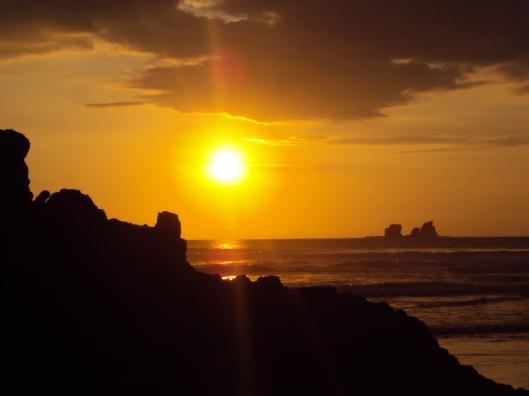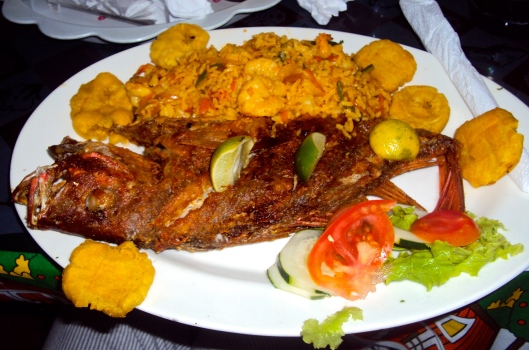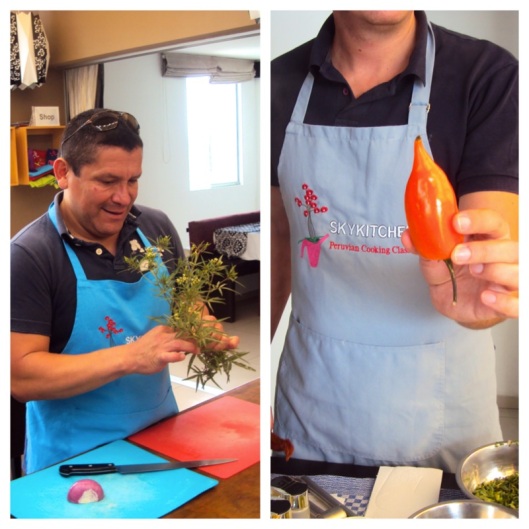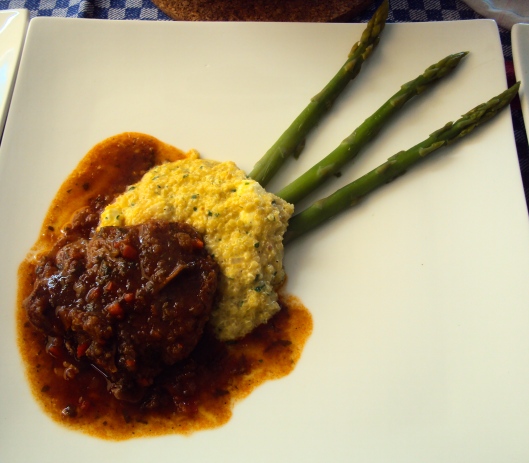Tags
ayampe, cangrejo encocado, churches, coconut, crabs, crucita, ecuador, food, fried fish, montañita, quito, seafood, seafood soup, sightseeing, soups, travel
Well folks, this is it. The conclusion of our three-month journey in South America. But let’s not get all sentimental and corny, shall we? I’d rather drown my complicated emotions in food porn.
As Brendan was kind enough to detail for you, our arrival in Ecuador was full of red tape and long waits, but we were rewarded with empty beaches and endless seafood. For the foreign tourist, prices in Ecuador are worthy of a double-take, particularly outside of popular tourist destinations like Salinas and Montañita. With the plethora of cheap beachfront restaurants in Crucita, we couldn’t leave town without sampling the local fare.
Let’s start with the cangrejo encocado, a gorgeous array of crabs swimming in a coconut cream sauce. Encocado would literally translate to “coconutted” and if that was a word in English, it’d be an accurate description. In coastal Ecuador, you can get just about any type of seafood encocado, from fish to shrimp to lobster. These guys were delicious, and worth the elbow grease required to free their sweet meat from the shell.
Ahhh, the sopa de mariscos. I’ve sampled plenty of seafood soups in the past, and the savory pot of sea creatures served to us in Crucita put those scrawny soup bowls to shame. I’d be hard-pressed to name a type of seafood that did not make an appearance in this ocean of goodness.
And yes, of course, there was more fried fish. It was red snapper, I couldn’t help myself! And it was served with arroz de mariscos and patacones. I’m a woman who knows what she likes.
After dropping Brendan and Colleen off at the airport in Guayaquil so they could get back to the jobs and responsibilities they love so well (boooo!), we headed back to the coast and split a week between the craziness of Montañita and the tranquility of Ayampe a bit further north. Highlights included sunbathing next to cows on the beach, Gaspar giving a goat a pound, and catching the first few days of the International Surfing Association’s World Masters Championship.
 Then it was off to Quito, where the proverbial mierda hit the fan as we attempted to make final preparations for our departure. I suspect the inefficiency, suddenly changing laws, and double-crossing were South America’s way of reminding us why we were heading back to the homeland in the first place. Like a shrewd mother, “I’m not mad, I’m just disappointed,” and my love is unconditional. At least we got in one good day’s worth of sightseeing! The churches in Quito are a sight to behold.
Then it was off to Quito, where the proverbial mierda hit the fan as we attempted to make final preparations for our departure. I suspect the inefficiency, suddenly changing laws, and double-crossing were South America’s way of reminding us why we were heading back to the homeland in the first place. Like a shrewd mother, “I’m not mad, I’m just disappointed,” and my love is unconditional. At least we got in one good day’s worth of sightseeing! The churches in Quito are a sight to behold.
And so it ends. What a truly amazing and humbling experience. I’ve learned so much. I’ve changed so much. To steal the words of writer Mary Anne Radmacher, “I am not the same having seen the moon shine on the other side of the world.” And I’m ever so grateful. Now, the adventure continues in New York.
Chau, amor. Hasta pronto.
























































